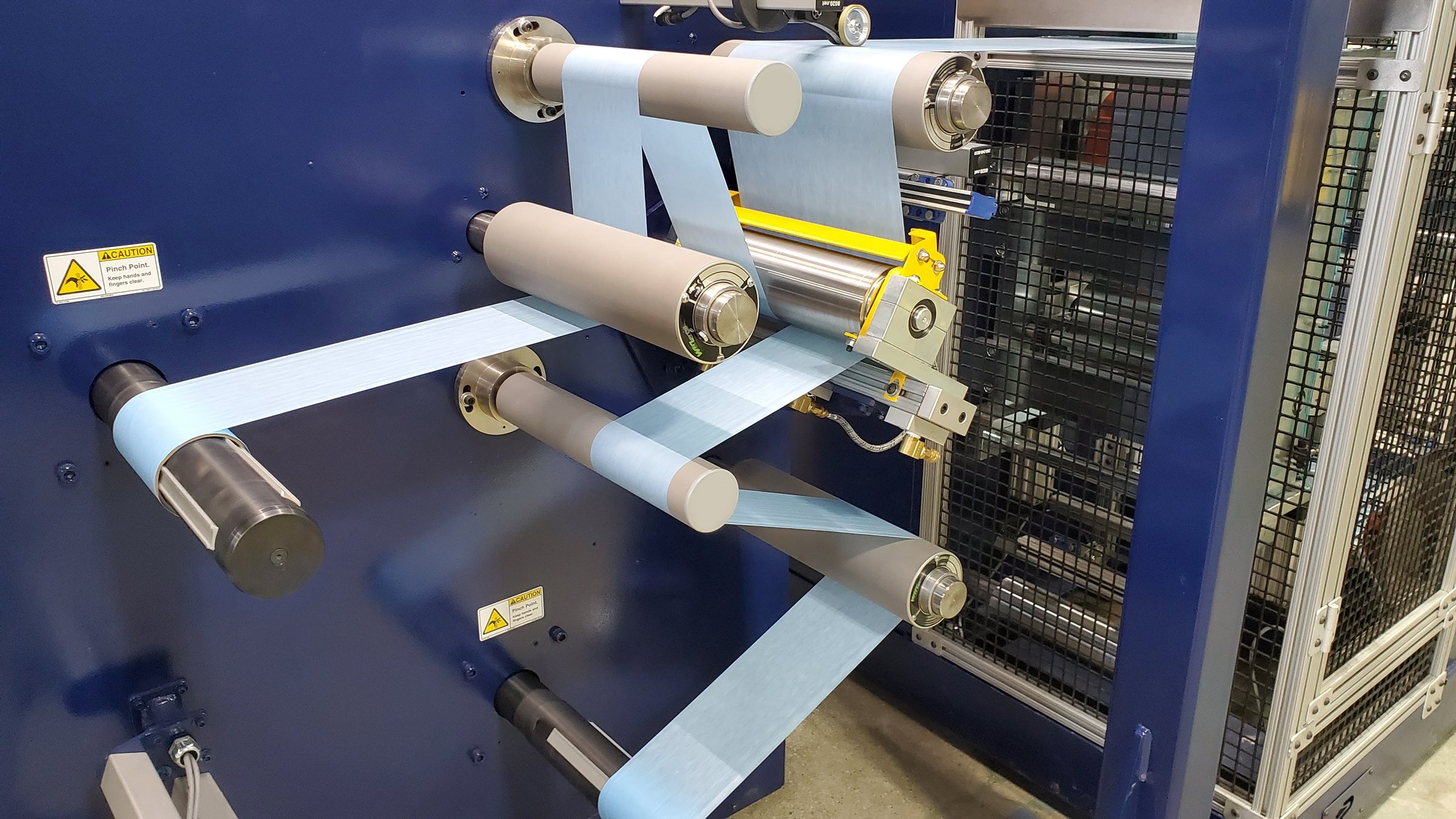Manufacturing research often uncovers not only a new product, but also multiple ways to produce it. And in complex web converting applications, testing various substrates and production processes can be a daunting and time-consuming task.
Oftentimes, companies have no choice but to interrupt regular production schedules – or wait for an opening – to test new applications in their plants.
But Pyradia, a custom machine builder headquartered in Quebec, is changing this equation. The company is growing its reputation as a leading supplier of pilot coating lines, which enable companies to test products efficiently on smaller scale equipment.
Recently, the company put its expertise to the test in a pilot coating line for pressure-sensitive adhesives.
Keeping It Versatile – and Compact
“Our customer must test both new materials and various adhesives,” said David Ross, P. Eng., R&D and engineering manager, Pyradia. “Because they were in the product development and testing phase, they needed a system that could easily adapt to changing process parameters.”
Since the customer planned to install the pilot line within their research and development facility, they also had limited floor space. Specifications called for a line measuring 40 feet long, built for a 12-inch web and capable of speeds up to 150 feet per minute.
The line includes the primary unwind, multimode cartridge coater, three-zone flotation dryer, secondary unwind, laminator and winder. In all, the coater cell can be configured for four coating methods including offset gravure, direct gravure, mayer rod or saturation mode.
“To maximize flexibility, we designed the pilot line to change over quickly between multiple coating modes,” Ross said. “As a result, our customer can test three or four different modes each day.”
Low Tension Challenges
Pyradia was also charged with supplying equipment that could handle low-strength web material, which introduces system design challenges.
Speed and tension control are critical in any web converting application. But for such delicate substrates, the pilot line had to operate under extreme low tension – especially when the material was wet due to full saturation. In fact, tension on the 12-inch web is maintained at just a fraction of a pound.
“The tension control must be sensitive and precise,” Ross explained. “If tension peaks, the web will break, and if the equipment loses tension, there will be coating defects.”
Precise Servo Control
To design the pilot coating line, Pyradia leveraged their relationship with Rockwell Automation and local distributor, Lumen.
“From the start, we worked with our Rockwell Automation team to select the right control components and design the system,” said Ross. “We also utilized the capabilities of Integrated Automation Builder (IAB) software, which allowed us to speed our design process.”
Pyradia built a solution based on Allen‑Bradley® GuardLogix® safety controllers, Kinetix® 5700 servo drives and VP-Series servo motors, and PowerFlex® 525 and 527 AC drives. The system is integrated on an EtherNet/IP™ network and monitored on an Allen‑Bradley PanelView™ graphic terminal.
Using servo technology proved to be an efficient way to achieve precise, flexible control of the web rollers. From a mechanical standpoint, the servo motors can be easily attached to different rollers when changing the system from one coating mode to another. The control parameters can be quickly adjusted from the machine interface.
“Servo technology is simply more efficient,” said Ross. “For example, Kinetix single cable technology speeds wiring and reduces installation time. And the drive’s compact configuration saves panel space.”
Improved Performance with Integrated Safety
The pilot coating line also features an integrated safety solution, using advanced capabilities of the Kinetix servo drives and the GuardLogix controller.
“With the controller and servos running on the network, we are able to create and modify safety zoning without any rewiring,” Ross said. “We also use the Safe Torque Off function in the drive.”
Zone control allows specific machine areas to slow down or stop, while others continue to run at normal speed. The Safe Torque Off capability removes rotational power from the motor without powering down the drive. These capabilities help enable workers to safely enter portions of the machine to make equipment adjustments, while the rest of the process continues normally.
“The integrated safety solution also delivers better information to operators,” Ross said. “If a door is open or an E-stop has been activated, the operator can access the diagnostics from the HMI very quickly – and address the issue.”
Speeding Products to Market
Pyradia’s customer credits system flexibility and performance with speeding the development, testing and regulatory approval of their products. And they are looking for even more versatility soon.
“Our customer recently approached us about adding a fifth coating mode for comma roll coating,” said Ross. “We look forward to retrofitting the equipment and enabling that option.”

